Contents
Experienced moonshiners know that cleaning moonshine with milk is one of the most reliable, safe and environmentally friendly methods of refining the finished product. But an acceptable result is obtained only if the right milk and the right proportions are used. I’ll go over the top two cleaning methods, looking at the pros and cons of each.
Theory
Milk protein contains albumin and casein. These substances are able to bind the molecules of harmful impurities and moonshine fusel oils, causing them to precipitate, which is then easily filtered. The result is an excellent drink with a mild taste.
But in addition to proteins, milk also contains fats that make moonshine cloudy. Fats do not affect the taste, but they look ugly. Therefore, for filtering without distillation (the first method), you need to use low-fat milk. If re-distillation is planned, the fat content of milk is not of fundamental importance (second method).
Cleaning with milk without distillation
A well-established method that has been used in Russian villages for more than one hundred years. Advantages: absolutely safe, does not require double distillation, can be combined with other cleaning methods (charcoal, potassium permanganate, soda). The disadvantage is that sometimes purified moonshine turns cloudy.
Technology:
1. Add 100-150 ml of skimmed (minimum fat content) pasteurized milk per 10 liters of moonshine with a strength of 45-50 degrees. High strength (but not more than 60 degrees) contributes to better folding of the protein.
Powdered milk can be used instead of pasteurized milk. To do this, 2-3 hours before cleaning the moonshine, the required amount of milk powder should be diluted in warm boiled water, then allowed to cool and infuse.
2. Stir the contents of the jar with a spoon, tightly close the lid and put for 5-7 days in a dark place at room temperature. Shake the jar well once a day for the first 5 days.
Almost immediately after adding milk to the moonshine, a violent reaction will begin and white flakes will appear at the bottom of the jar. It is under the influence of protein that harmful impurities precipitate.
3. Drain the moonshine from the sediment and filter through several layers of cotton wool. You can also put a few activated charcoal tablets in cotton wool.
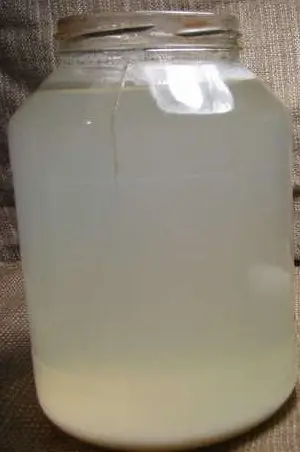
Purified moonshine is ready for use. Depending on the fat content of the milk used, the drink may turn out to be slightly cloudy. To get rid of the turbidity, once again pass the moonshine through coal (preferably wood) and cotton wool (filter paper).
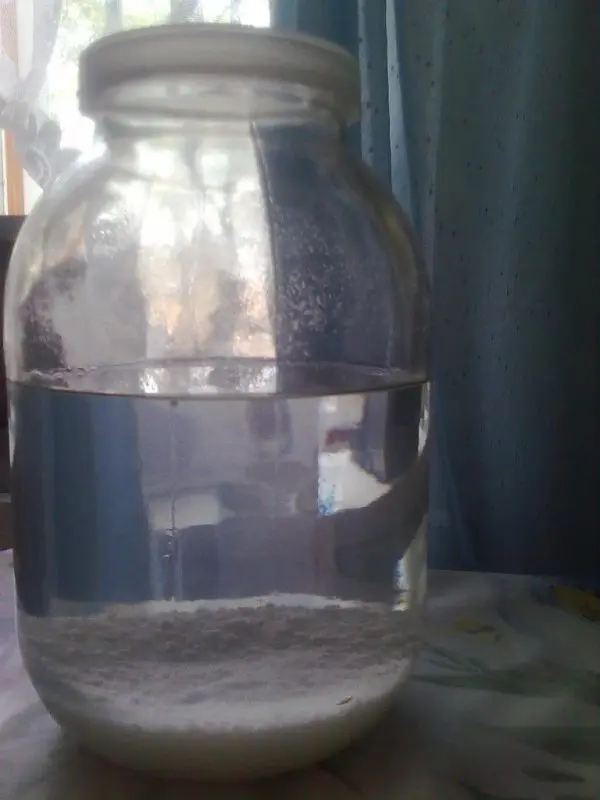
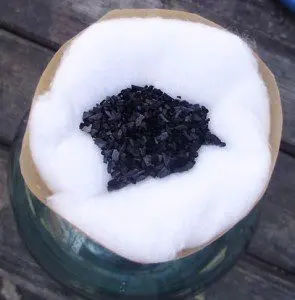
Purification of moonshine with milk with distillation
Advantages: excellent result, any high-quality milk is suitable, ecological cleanliness, combined with other methods. The disadvantage is that it requires a repeated distillation, which takes time.
Technology:
1. Add 100 ml of fresh homemade milk to 1 liter of moonshine with a strength of 45-55 degrees.
2. Mix well and close the lid.
3. Put the jar for 5-6 days in a dark place with room temperature. The first 4 days, open and stir once a day.
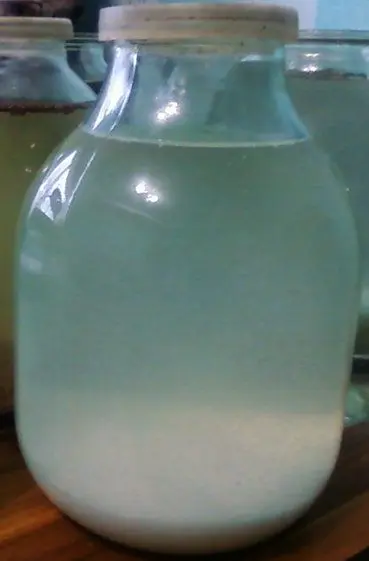
4. Drain the moonshine from the sediment, dilute to 20% with water and redistillate, dividing the yield into fractions (“heads”, “body” and “tails”).
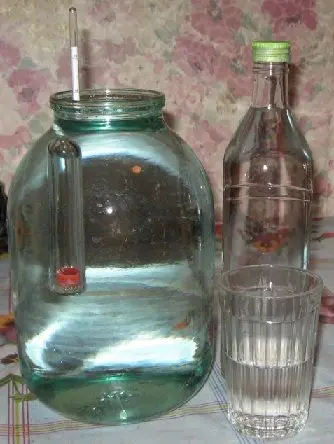
PS If there are doubts about the quality, you can clean vodka with milk at home using the same methods. Sometimes the amount of precipitation that falls is shocking.









